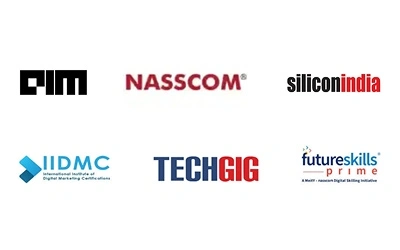Oxford, a world-renowned university, offers an Analytics course that equips students with data-driven decision-making skills. This course focuses on extracting insights from large data sets and utilizing them to drive business decisions. It is designed for individuals who want to pursue a career in analytics or enhance their existing skills. The Analytics course at Oxford is a ten-week program that is delivered online, ensuring that students from all over the world can participate in the program. Students can learn at their own pace and can easily fit studying into their busy schedules. The course is divided into three modules: Data Management, Statistical Analysis, and Data Visualization. The Data Management module teaches students how to collect, initiate, and manipulate data to prepare it for analysis. It covers topics like data cleaning, data wrangling, data integration, and data quality. By the end of this module, students have a better understanding of how to manage data effectively, giving them a strong foundation for the rest of the course. The Statistical Analysis module dives into more advanced topics like inferential statistics, regression, and hypothesis testing. Students learn how to apply these techniques to draw insights from data and make predictions for businesses. Additionally, this module emphasizes developing critical thinking skills which are necessary to analyze statistical results. The Data Visualization module teaches students how to represent insights gained from data visually. This skill is incredibly important as it allows organizations to see data in an easily digestible format, highlighting trends, patterns, and insights effectively. In this module, students learn how to create compelling and interactive visualizations using software tools like Tableau. Throughout the course, students are required to complete weekly assignments. These assignments test their understanding of the modules and provide them opportunities to develop hands-on data analytics skills. Furthermore, for a final group project, students apply all the skills to an industry-based case study, providing them with a simulated real-world scenario. The Oxford Analytics course provides its students with numerous benefits. The program is delivered by world-renowned faculty members who have extensive experience of working with data analytics in a variety of fields, providing valuable insights from a range of industries. The course emphasizes practicality and problem-solving skills, developing students into highly skilled data analysts. In conclusion, Oxford's Analytics course is a highly reputable program designed to develop students' practical data analytics skills. Through its holistic approach, students are able to learn how to collect, analyze, and represent data effectively, positioning them as highly skilled data analysts in the job market. The program's emphasis on practical applications, combined with faculty members' expertise, provides students with a highly educational and fulfilling experience.

₹60,000




Hurry Up!
Limited seats call us now for amazing discounts on digital maketing course



Skillfloor is officially recognized by the Government of India as a Startup India (DPIIT) certified institute — a mark of trust in the quality of our courses and career-focused learning.
We offer hands-on programs across multiple fields, designed by industry experts to help you gain skills that employers value:
Digital Marketing – Grow businesses online with SEO, social media, and analytics.
AI & Machine Learning – Build practical AI skills for real-world applications.
Ethical Hacking & Cybersecurity – Protect networks and systems from cyber threats.
Data Analytics & Data Science – Analyze data and make smarter decisions.
Other Emerging Technologies – Learn trending, in-demand skills.
At Skillfloor, you don’t just learn — you practice, complete live projects, and prepare for real career opportunities. Whether you’re a student, graduate, or working professional, we help you upgrade your skills and grow confidently in your career.
Join a government-recognized institute shaping India’s next generation of skilled professionals.



- Overview of data analysis and its importance in business
- Types of analytics: Descriptive, Predictive, Prescriptive
- Role of data in decision-making processes
- Introduction to common tools: Tableau, PowerBI, Excel
- Ethical considerations in data collection and analysis
- Data sources: Primary and secondary data
- Data collection methods (surveys, web scraping, databases)
- Data cleaning techniques (handling missing values, outliers)
- Data transformation and feature engineering
- Data storage concepts (structured vs. unstructured data)
- Descriptive statistics: Mean, median, mode
- Data visualization basics (histograms, scatter plots)
- Identifying data patterns and trends
- Outlier detection and handling methods
- Correlation and causation analysis
- Inferential statistics and probability theory
- Hypothesis testing (t-tests, chi-square tests, ANOVA)
- Measures of central tendency and variability
- Confidence intervals and margin of error
- Regression analysis: Linear and logistic regression
- Principles of effective data visualization
- Types of charts and their uses (bar, line, pie, heatmaps)
- Designing dashboards for different audiences
- Interactive visualization techniques
- Data storytelling for impactful presentations
- Time series analysis and forecasting methods
- Clustering and segmentation analysis
- Decision trees and classification techniques
- Introduction to machine learning in business analytics
- Model evaluation and selection
- Basics of SQL for data manipulation
- Creating databases and relationships
- Aggregating data with SQL (GROUP BY, JOIN)
- Data modeling for business intelligence (star and snowflake schemas)
- Case study: Building a business model with SQL
- Connecting and preparing data in Tableau
- Creating basic visualizations (charts, maps)
- Advanced Tableau functions (LOD calculations, table calculations)
- Building interactive dashboards and stories
- Publishing and sharing visualizations on Tableau Server/Online
- Introduction to PowerBI workspace and components
- Data import and transformation with Power Query
- Data modeling and relationships in PowerBI
- Creating and customizing visualizations
- Publishing and collaborating on PowerBI Service
- Selecting a real-world dataset for analysis
- Defining business questions and objectives
- Conducting data analysis and visualization
- Presenting findings in a comprehensive dashboard
- Peer review and feedback on project